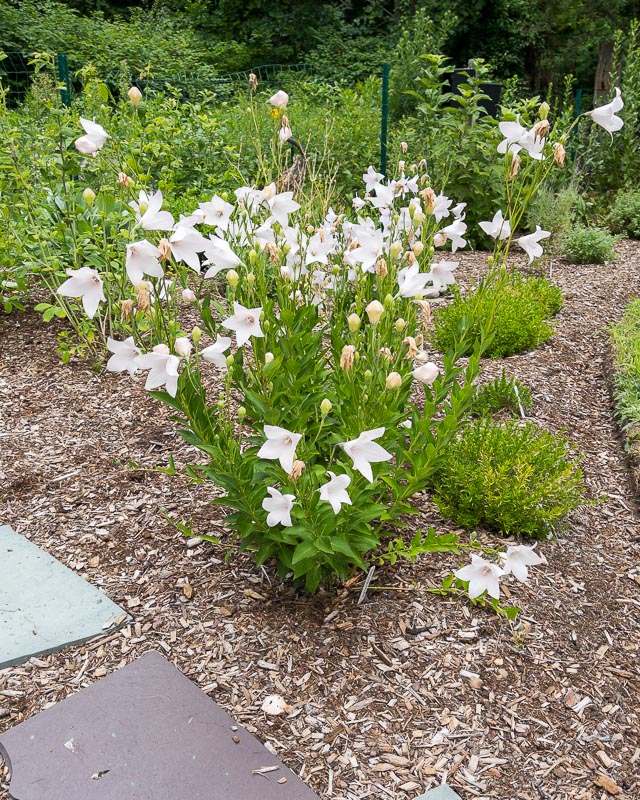Balloon Flower 'Astra White'
Common Name:
Balloon Flower ‘Astra White’
Botanical Name:
Platycodon grandifiorus ‘Astra White’
Mature Size:
10” - 12”
Sun Exposure:
Full Sun, Partial Shade
Soil Type:
Loam
Soil pH:
Acid, Alkaline, Neutral
Bloom Time:
Mid summer to late summer
Flower Color:
White
Care:
Balloon flowers make excellent plants for border gardens or rock gardens and the blooms attract pollinators such as bees and butterflies thanks to their wide-open petals. These perennials will self-sow their seed, though they aren't aggressive spreaders. Overall, balloon flowers are fairly low-maintenance plants and are quite pest- and disease-resistant outside of root rot in areas with large amounts of rainfall.
Soil:
Balloon flowers prefer organically rich, loamy soil that has good drainage. They don’t grow well in dense soil, such as clay. They like a soil pH in the 5.5 to 7.5 range.
Water:
Keep the soil of young plants consistently moist but not soggy. Once established, balloon flowers like a moderate amount of moisture in the soil, but they can tolerate short periods of drought. They won’t need a lot of supplemental watering unless you have a long period without rainfall that causes the soil to dry out.
Temperature and Humidity:
Balloon flowers are hardy and do well in USDA growing zones 3 to 8. Their ideal temperature range is between 60 and 80 degrees Fahrenheit, but they can withstand higher temperatures if they have some shade in the afternoon. Frost can kill young plants and will cause established plants to die back into the ground in the fall. Balloon flowers tolerate both humid and dry air conditions, provided they have the right amount of soil moisture.
Fertilizer:
Balloon flowers typically don't need supplemental feeding if you have rich soil. But a layer of compost in the fall can help them replenish the energy they expend blooming during the growing season. If you have poor soil, use an all-purpose, slow-release fertilizer in early spring.
Pruning:
Pruning generally isn't necessary with balloon flowers, though you can do so for appearance. To achieve stockier plants, you can cut back tall stems by about half in the late spring. This can help to prevent the plants from flopping over. Also, deadheading your plants (removing spent blooms) will keep them looking good and repeatedly blooming. Don't remove the whole stem, just the faded flowers. The remaining buds on the stem will continue to open.
Overwintering:
Cut back to the base in fall.
Source:
https://www.thespruce.com/how-to-grow-balloon-flowers-4125528



